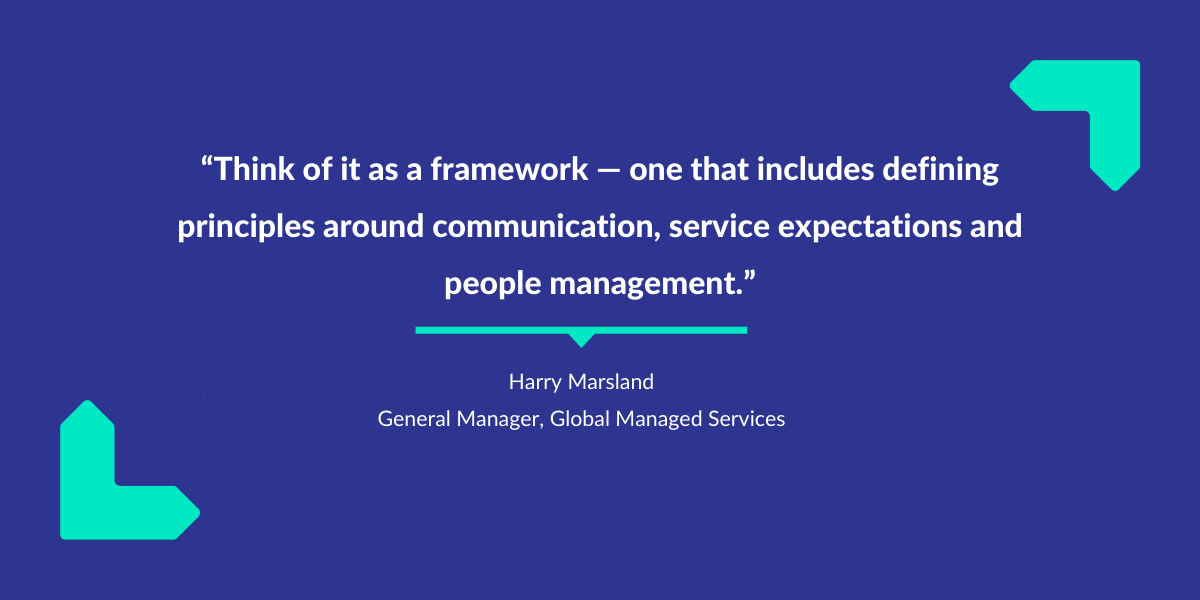Clear communication and direction are needed between client and MSP to ensure that all parties get where they need to go.
If you’ve ever taken the subway, you’re familiar with the phrase 'mind the gap' — that audible or visual warning to be careful when crossing the space between the station platform and the subway car door. When it comes to MSP governance and planning, the same principle applies. This is especially true within today’s ever-changing digital landscape — one where organizations are adjusting to new working conditions, grappling with a skills shortage and managing the pressures of streamlining operations. It’s a climate where more clients are looking to MSPs to deliver the vital IT resources — including maintenance, monitoring and security services — that their employees need to compete and stay relevant.
There are both immediate and long-term benefits of working with the right MSP — here are the common do’s and don’ts when it comes to MSP governance and planning.
DO – Keep the Lines of Communication Open
Think of the relationship as a marriage, one of give-and-take and open collaboration. Planning is an important facet but all about building and fostering the relationship for short-term and long-term success. According to Harry Marsland, General Manager of Global Managed Services at Appnovation, this means thinking of governance as a process that happens on several levels. It’s all with an eye on clear accountability and representation.

DON’T – Think Small
A successful relationship with an MSP can come down to a keen understanding of the scope of the services provided. As companies look to scale their operations through digital transformation initiatives, effective governance is about setting and tracking incremental goals and working closely with the MSP serving as a trusted advisor. “It is about understanding what can potentially go wrong — and defining the right approach to mitigate and yield the best outcome”, says Marsland.
DO – Establish Responsibilities
Both client and MSP should clearly set out the parameters of the relationship. Clear communication will define responsibilities, expectations and gaps in workflow management. When establishing a service-based relationship with a client, Marsland believes that governance builds a much-needed structure so teams can confidently focus on planning.
DON’T – Be Afraid of Change
Part of a good governance process is risk management. Within an evolving digital landscape, learning how to adapt to shifting business needs is part and parcel of a successful client-business relationship.
DO – Set Expectations
“It’s important that the roles and responsibilities are clearly defined for the client and MSP. It’s not a one-way street: a careful balance must be established between two organizations for the relationship to be beneficial for both parties,” advises Marsland. That said, working with an MSP should be about developing and managing key strategies and expectations of internal stakeholder groups.
DON’T – Adopt a Reactive IT approach
Working with an MSP is a matter of trust, but it also means that, as a client, you still need to be responsive. We mentioned earlier that the client and MSP relationship is similar to that of a marriage. Trusting their inherent experience and expertise is important— but so is being proactive. Similar to open lines of communication, raise any immediate issues or concerns with your MSP – don't wait for the next scheduled touchpoint. “The value proposition of working with a managed services provider like Appnovation includes delivering exceptional governance and planning centered around expertise in established services and technologies,” says Marsland.
Effective MSP governance and planning is a balancing act. The key to developing and maintaining all-around success hinges on understanding where the gaps are and clearly defining responsibilities and expectations. Minding the gap in this respect is all about staying on the right track.
What are your business challenges when it comes to governance and planning? Talk to us.


